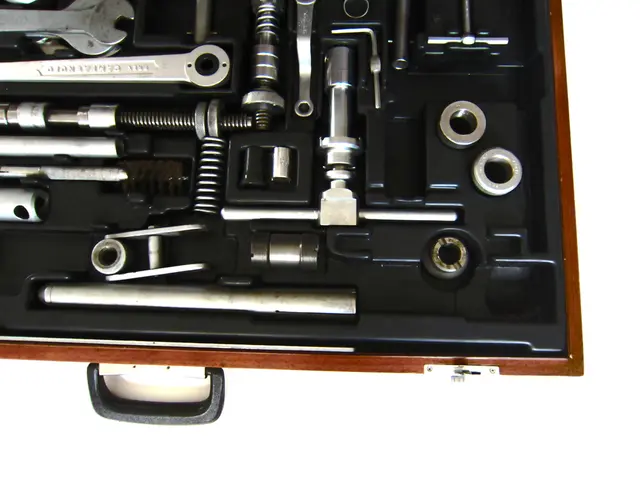Repeating K-fold Cross Validation Processes in R Coding
In the realm of machine learning, the Repeated K-Fold Cross-Validation method is a popular technique for estimating the prediction error and accuracy of a model. This approach is particularly useful when working with R, thanks to its rich library of inbuilt functions and packages.
The process of implementing Repeated K-Fold Cross-Validation in R involves four key steps:
1. **Data Split:** The dataset is randomly divided into K approximately equal subsets (folds). This ensures that each fold represents a portion of the data, providing a representative sample for model evaluation.
2. **Train and Test in Folds:** For each fold, use K-1 folds to train the model, and the remaining fold to test it. This process is repeated K times, so each fold is used once as the test set.
3. **Repeat the K-Fold Process Multiple Times:** Repeating the entire K-Fold procedure several times (with different random splits) allows for more robust estimation by reducing the variance in performance metrics.
4. **Average the Results:** Collect the performance metrics (e.g., accuracy, RMSE) from all folds and repeats, then average them to get a reliable estimate of model performance.
### Implementing in R
The `caret` package offers an easy way to perform Repeated K-Fold Cross-Validation for both classification and regression models:
```r library(caret)
# Define the control method with repeatedcv train_control <- trainControl( method = "repeatedcv", # repeating k-fold CV number = 10, # 10 folds repeats = 3 # repeat 3 times )
# Train a model (e.g., linear regression for regression problems) model <- train( sales ~ ., # formula data = marketing, # data frame method = "lm", # model method (linear regression) trControl = train_control )
print(model) ```
This example sets up 10-fold repeated 3 times cross-validation, training a linear regression model. For classification models, you just change the formula and specify a classification method (e.g., `"rf"` for random forest).
Alternatively, you can use the `rsample` package for repeated folds:
```r library(rsample)
# Create 10 folds repeated 3 times cv_splits <- vfold_cv(data = your_data, v = 10, repeats = 3)
print(cv_splits) ```
This creates a list of resamples that you can train models on iteratively.
### Key Points to Remember
- This process works equivalently for **classification and regression models**. - The `caret` package's `trainControl` with `method = "repeatedcv"` is a common, straightforward approach. - The choice of `number` (folds) is often 5 or 10; `repeats` can vary (3 is common). - Performance metrics depend on the task: accuracy, ROC AUC for classification; RMSE, R² for regression.
This approach balances bias and variance, giving a more reliable estimate of model generalization performance compared to a single train-test split[1][3]. The "trees" dataset is used for the regression model, an inbuilt dataset of R language. The repeated K-fold cross-validation method is advantageous for estimating the prediction error and accuracy of a model. A lower value of K can lead to a biased model, and a higher value of K can lead to variability in the performance metrics of the model. Each repetition of the algorithm results in different splits of the sample data. The repeated K-fold cross-validation technique is the most preferred method for both classification and regression machine learning models.
Technology, such as data-and-cloud-computing, plays a critical role in the implementation of Repeated K-Fold Cross-Validation in R. The package, a rich library of functions and packages in R, provides an easy way to perform Repeated K-Fold Cross-Validation for both classification and regression models (technology). Furthermore, the package can also be utilized to create repeated folds for this technique (technology).




